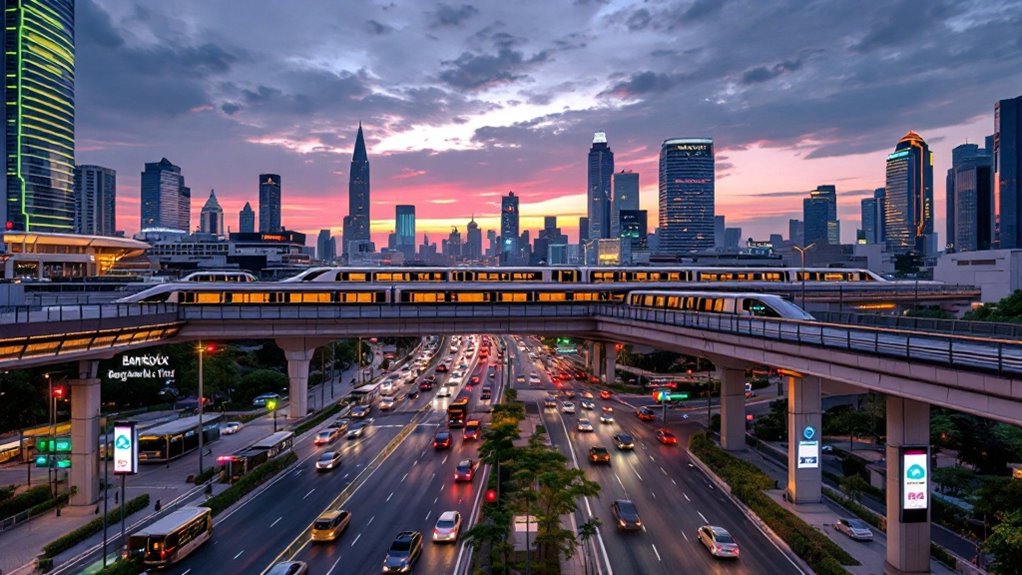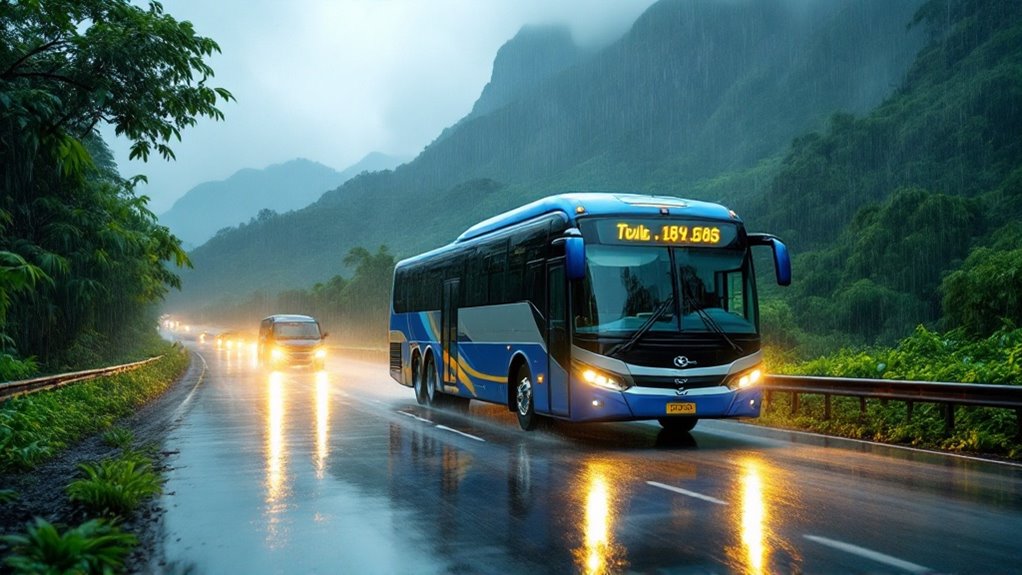Artificial intelligence is reshaping Bangkok’s public transit, with Area Traffic Control systems optimizing signals in key districts and predictive analytics identifying congestion hotspots for rapid response. The city plans to expand smart corridors like Sukhumvit and Rama IX by 2026, incorporating data-driven forecasting for bus and train adjustments and implementing unified, biometric-based payment solutions. AI-enhanced CCTV guarantees safety and speeds up emergency responses, while infrastructure upgrades prepare for autonomous vehicles. There are further innovations transforming travel across the city.
As artificial intelligence becomes increasingly central to urban management worldwide, Bangkok is leveraging advanced AI technologies to overhaul its public transit systems. The city has begun deploying Area Traffic Control (ATC) systems capable of real-time signal adjustments based on the volume of vehicles, which has already improved peak-hour traffic flow by 10% and non-peak flow by 30%.
By 2026, ATC deployment is set to expand to major corridors including Sukhumvit and Rama IX, as well as other key Bangkok roads. These systems use predictive analytics, incorporating both historical and real-time data, to forecast congestion hotspots and optimize signal timing. Integration with AI-enhanced CCTV cameras allows constant monitoring for traffic violations, such as illegal parking, thereby improving compliance and overall safety. The city’s efforts build on cooperation between the Hungarian Parliament and Bangkok Metropolitan Administration (BMA), which recently discussed AI implementation for environmental conservation in a high-level meeting.
Cross-system coordination leverages sensor data, adaptive traffic lights, and enforcement mechanisms to create a thorough approach to traffic management. Driver discipline remains a key challenge, as many taxis, tuk-tuks, and buses continue to park along roads waiting for passengers, contributing to persistent congestion issues despite technological advancements.
In addition to street-level improvements, Bangkok is investing in smart transit infrastructure that supports multimodal integration. Future plans include unifying buses, trains, and ride-sharing services under a single payment system, potentially utilizing contactless cards or biometric authentication methods like facial recognition and fingerprint scans.
Regional trials suggest Bangkok will likely implement these biometrics soon. Upgrades are underway to prepare for autonomous vehicles, with infrastructure being adapted to support self-driving transit options. AI also supports energy-efficient operations within transit hubs, reducing both operational costs and emissions.
Expansion plans aim to scale transit networks beyond city limits, connecting rural and urban areas by 2030.
Data-driven demand forecasting is another core application of AI in Bangkok’s transit overhaul. Advanced analytics predict passenger traffic patterns, allowing authorities to adjust bus and train frequencies in real time.
AI-driven congestion modeling simulates various scenarios, rerouting vehicles and managing tourist flows to prevent overcrowding. During events or emergencies, transit schedules adapt dynamically to maintain efficiency.
Public safety benefits from AI-enhanced surveillance, which detects accidents, pedestrian hazards, and suspicious activity, speeding up emergency responses.
Through these extensive strategies, Bangkok demonstrates how AI can master the complexities of urban transit while anticipating future mobility needs.






